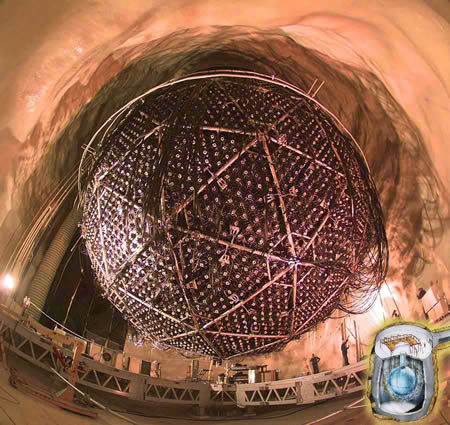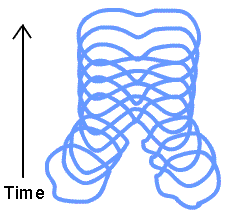| Our next class, the last of the year, will be a review of what we have done since Reading Week. A pdf of the PowerPoint is available via the link. |
As part of our discussion of the neutrino, and in particular its non-zero mass, we discussed a 2002 measurement by the Sudbury Neutrino Observatory (SNO). Located in an abandoned mine in Sudbury Ontario, the observatory is over 2 km underground, and consists of 1000 tons of heavy water surrounded by detectors. The photograph is of the container for the heavy water surrounded by the detectors. You can see people on the catwalk, which gives a sense of the size of the apparatus. In the lower-right is the SNO logo. |
 |
The rest of the class was an overview of "Elementary Particle Physics" ending with a very brief discussion of String Theory. As part of that discussion, we showed some animated gifs which I duplicate below with some brief commentary.
|
||||
It turns out that the dimensions of the strings is much greater than the three spatial dimensions and one time dimension we are used to. However, those extra dimensions are "folded up" inside the string, so are unobservable. This is called "compactification." Currently, the dimensionality of spacetime is believed to be 10 or 11, of which only 4 are normally observable: the three spatial dimensions and the time dimension. |
 |
We have drawn many graphs of position versus time for elementary interactions. One property of these diagrams is that: they describe all fundamental interactions as occurring at a single point in space and time, the vertices. One possible reason for the difficulty in unifying these interactions with gravitation is that gravity acts at a distance, not at a point. The figure to the right shows the equivalent of a these diagrams in a string theory. Note that we usually have the time axis horizontal, but this diagram has it vertical. String theorists hope that since this reaction is no longer confined to a single point it may be possible to unify all four fundamental interactions. |
 |
These figures were done by Patricia Schwartz and are used by permission. The originals are at http://superstringtheory.com/index.html.
| Here is today's Journal |